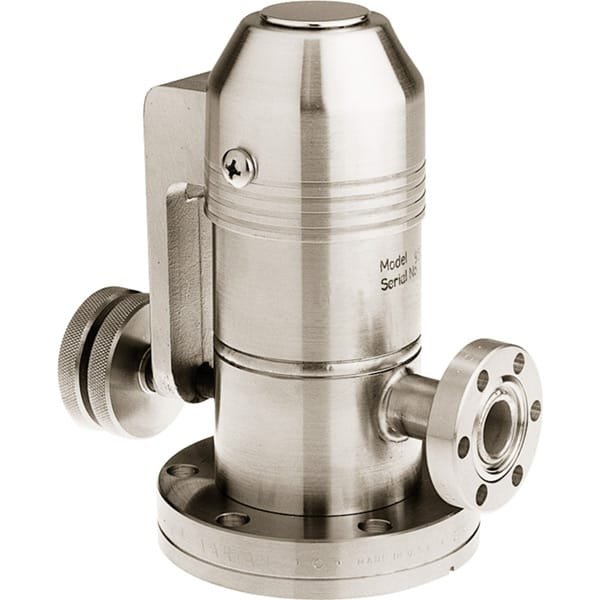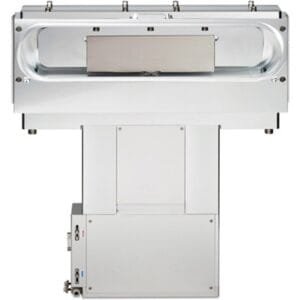Manual SS Sapphire-Sealed Variable Leak Valve (CF Flanged) Description
TFM offers the Manual Stainless Steel Sapphire-Sealed Variable Leak Valve (CF Flanged), a precision-engineered vacuum component ideal for fine control of gas flow into ultra-high vacuum (UHV) and high vacuum (HV) systems. This valve is specially designed with a sapphire sealing element, ensuring exceptional leak tightness, excellent chemical resistance, and long-term stability under repeated use.
Unlike standard valves that rely on elastomer seals or needle-taper fittings, the sapphire-sealed construction delivers non-outgassing performance and precise, repeatable leak rates, even in plasma, semiconductor, or analytical instrumentation environments.
Key Features
Material: All-metal body in corrosion-resistant 304L or 316L stainless steel
Seal Type: Polished sapphire disc with metal-to-sapphire sealing mechanism
Flange Connection: CF (ConFlat®) flanges – available in DN16CF, DN40CF, and DN63CF
Pressure Range: Atmosphere to <10⁻⁹ Torr
Leak Rate: < 1×10⁻¹⁰ Torr·L/s (helium leak tested)
Valve Control: Micrometer-style manual adjustment for continuous leak-rate tuning
Temperature Range: Bakeable up to 200–250 °C (valve closed), depending on model
Flow Media: Inert gases, nitrogen, argon, helium, hydrogen, and process gases
Mounting Orientation: Vertical or horizontal
Advantages of Sapphire-Sealed Variable Leak Valves
Ultra-high vacuum compatibility with no organic materials or elastomers
Outstanding leak tightness even after numerous open/close cycles
Low outgassing for ultra-sensitive vacuum processes
High corrosion resistance in reactive or aggressive gas environments
Precise manual flow control down to molecular flow regime
Ideal for gas calibration, RGA backfill, or ion source feed-in
Applications
Thin film deposition systems (PVD/CVD)
UHV surface science chambers
Analytical instrumentation (e.g., mass spectrometry, RGA)
Leak testing systems and calibration setups
Semiconductor and photonics process lines
Controlled backfilling or venting of vacuum systems
Packaging and Quality Control
Each Manual Sapphire-Sealed Variable Leak Valve is helium leak tested and vacuum cleaned prior to shipment. Valves are packaged in cleanroom-compatible double-layer anti-static bags with product labels indicating flange size, leak rate class, material, and serial number.
Get Contact
TFM supplies sapphire-sealed variable leak valves with CF flanges in various configurations and sizes for research and industrial vacuum systems.
Contact us to request a quote or discuss custom designs compatible with your chamber layout.
Specifications Table
| Manufacturer | TFM |
|---|---|
| Pressure | Torr 1.000 x 10-10 Torr mbar 1.330 x 10-10 mbar atm 1.00 atm |
| Rates | Controlled Leak Rate 1.330 x 10-9 mbar*L/s 1.000 x 10-9 Torr*L/s Max Flow 6.00 L/min |
| Temperature | Bakeable 450 ºC 842 ºF |
| Valve Body Material | 304L SS |





Reviews
There are no reviews yet.